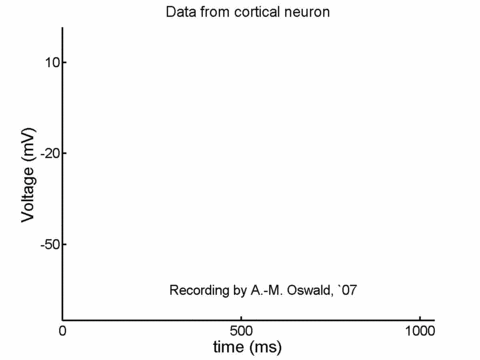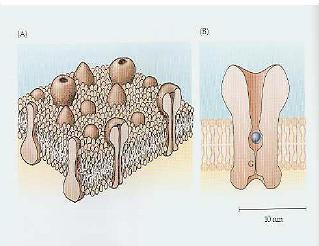Brain Dynamics:
What is a Spike?
Neurons have membranes that separate their insides (intracellular) from the surrounding
environment (extra cellular). What makes a neuron so special is that there are charged
particles, like sodium and potassium, both inside and outside the cell. This means that
there can be a potential difference across the membrane, just like a battery. During a spike,
or action potential as it is called by neuroscientists, a neuron's membrane potential quickly
rises from values around -65 mV to about 20 mV and then drops back to -65 mV. How does
this happen? Small holes in the membrane called channels let sodium and potassium ions
pass through the membrane, changing the potential difference across the membrane over
the time course of the spike. Hodgkin and Huxley not only figured out the rules that the
channels obey, but amazingly predicted that channels even existed—this was not known in
their time! Channels were finally observed decades after their original work.
 |
 |
| |
Middle and right images from "Neuron to Brain" 4th Ed.
- pg.26 John G. Nicholls, A. Robert Martin, B. G. Wallace, P. A. Fuchs
Sinauer Press. (permission pending)
|
To learn more about spikes in brain circuits,
click here.



